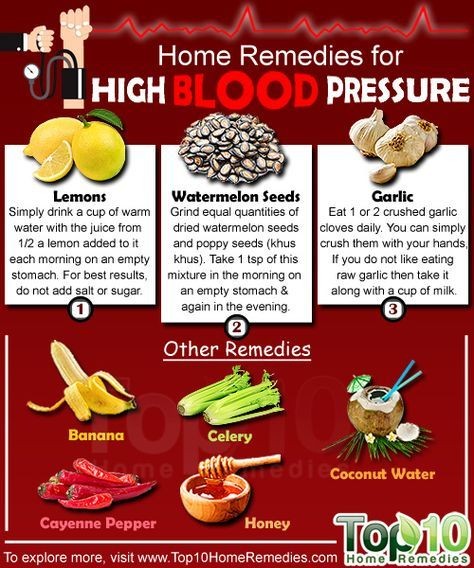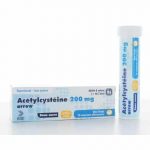
19 Herbs That May Help Lower High Blood Pressure
Home remedies for lowering hypertension include a number of herbs, such as cinnamon, ginger, garlic, and more.
High blood pressure (BP), or hypertension, is a major risk factor for various health conditions such as:
Your doctor may advise you on lifestyle changes and medications to manage your BP. Although there is a lack of sufficient scientific data, many herbs are touted as treatments for hypertension. Do not take them unless your doctor permits you to do so.
Although most of these herbs have been in use in culinary and over-the-counter herbal preparations for many years, it must be noted that research on their potency and side effects are still not well established.
You must consult your doctor before using any of the herbs below as a replacement for your BP medications.
19 herbs that lower high blood pressure
Here are 19 herbs that may help lower high BP:
- Allium sativum (garlic): Probably the most popular seasoning, garlic is known for its effects on blood and blood vessels. Garlic contains allicin which prolongs bleeding time and thins blood. Studies report that regular garlic consumption aids nitric oxide production, causing muscle relaxation and vasodilation, resulting in lowered BP.
- Lavandula stoechas (French lavender): This beautiful herb lowers BP through its effect on the BP-controlling areas in the brain. The flowers boiled in water and distilled can be consumed as tea three times a day, according to herbalists.
- Avena sativa (green oat): Muesli and oats for breakfast can significantly reduce the need for antihypertensive medication and improve BP control (when combined with other lifestyle recommendations). The action is thought to be due to an improved gut microbiome. The same benefits can be obtained by ingesting recommended amounts of psyllium husk.
- Annona muricata (prickly custard apple): The tree grows natively in the Caribbean and Central America. The leaf extract of the plant lowers elevated BP by reducing peripheral vascular resistance.
- Apium graveolens (celery): Celery is famous for its diuretic properties, which play a role in its BP-lowering properties. It facilitates the removal of excess tissue fluid and sodium through urine, helping maintain low BP. Recent studies report that celery seeds have BP-lowering properties.
- Camellia sinensis (tea): The humble tea, a staple drink in eastern parts of the world, has antioxidant and healing properties. Many studies link the consumption of green tea and oolong tea with a decreased risk of hypertension.
- Commelina virginica (Virginia dayflower): It is a perennial herbaceous plant native to the Mideastern southeastern United States. Animal studies confirm that the whole plant extract can counteract the BP spike seen in pigs injected with phenylephrine (a BP-spiking drug).
- Crataegus pinnatifida (Chinese hawthorn): This herb is used in Chinese medicine as a treatment for face edema (swelling) and BP. It contains active phytochemicals called rhynchophylline, which are potent antioxidant agents and help blood thinning. Hawthorn improves nitric oxide release from blood vessels, promoting peripheral blood vessel relaxation, cardiac myocyte repair, regeneration, and endothelial regeneration.
- Daucus carota (carrot): Apart from the eyes, carrots are good for heart health. The high fiber content in carrots may help modulate the gut-brain axis through an improved gut microbiome, which may keep metabolic diseases at bay, including hypertension and diabetes mellitus.
- Hibiscus sabdariffa (roselle): This shrub that belongs to the shoe flower family is vibrant red and often used in fancy teas. The leaves, calyx, and corolla of this plant are used traditionally in many West African countries for their antihypertensive effects. Animal studies report that the petal extract of roselle and seeds has a direct relaxant effect on the aortic smooth muscles of rats, making it especially useful in renovascular hypertension.
- Linum usitatissimum (linseed, flaxseed): Known for its beneficial action on the gut and gut bacteria, flaxseed contains fatty acids called α-linolenic acid, which is beneficial for heart diseases, inflammatory bowel disease, arthritis, and other health problems. Flaxseeds protect the inner wall of blood vessels against atherosclerotic cardiovascular disease by a reduction in serum cholesterol, platelet aggregation, and antioxidant properties.
- Lycopersicon esculentum (Tomato): Tomato extract is a cornucopia of carotenoids, such as lycopene, beta carotene, and vitamin E, which are known as effective antioxidants that slow the progress of atherosclerosis. In small-scale studies, tomato extract given to people treated with low doses of angiotensin-converting enzyme (ACE) inhibitor, calcium channel blockers, or their combination with low-dose diuretics, exhibited a clinically significant effect, reducing BP by more than 10 mmHg systolic and more than 5 mmHg diastolic pressure.
- Moringa oleifera (drumstick leaves): The recently hailed superfood, moringa leaf extract, when taken in moderation, can help reduce BP, improve male sexual function, and help improve cardiac output in people with a weak heart due to its thiocarbamate and isothiocyanate fractions.
- Ocimum basilicum (basil): Basil leaves contain eugenol that has BP-lowering properties. Try having basil tea first thing in the morning. It may help lower your BP levels.
- Punica granatum (pomegranate): Pomegranate juice is becoming a more popular fruit drink. Pomegranate acts directly on your kidneys and reduces the activity of ACE inhibitors by about 36 percent, which cause salt and water retention in the body and result in hypertension in the long run.
- Raphanus sativus (radish): Animal studies have reported that cardiovascular inhibitory effects of the plant are mediated through the activation of muscarinic receptors, thus possibly justifying its antihypertensive effect. It should be used in its raw form in salads and soups for maximal effect.
- Rauwolfia serpentina (rauwolfia): This woody herb found in Asia, South America, and India is probably the world’s first antihypertensive drug. The purified alkaloid of R. serpentina called reserpine was the first potent drug to be widely used in the long-term treatment of hypertension. However, this herb has a host of drug-drug interactions and psychiatric side effects that limit its use.
- Theobroma cacao (cocoa bean): Flavonoids contained in chocolate stimulate the formation of nitric oxide, increase vasodilatation, and reduce endothelial dysfunction. Clinical research shows that daily consumption of dark or milk chocolate, providing 213 to 500 mg of cocoa polyphenols, can lower systolic BP by about 5 mmHg and diastolic by about 3 mmHg.
- Zingiber officinale (ginger): Gingerol, an essential oil present in raw ginger, improves blood circulation and relaxes the muscles surrounding the blood vessels. Human trials on hypotensive effects of ginger have been few and generally used a low dose with inconclusive results.


